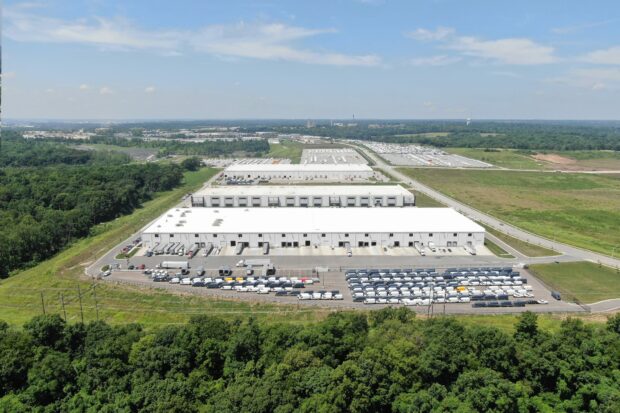HOME | ABOUT US | MEDIA KIT | CONTACT US | INQUIRE
HOME | ABOUT US | MEDIA KIT | CONTACT US | INQUIRE
By rail and by air, big changes burnish Missouri’s credentials in logistics.

PUBLISHED AUGUST 2023
To the untrained eye, little has changed over the past year with the transportation infrastructure that supports Missouri’s economy. We still have major cross-country interstates in each direction. We still have the same number of international airports. The watersheds of the Mississippi and Missouri Rivers still hold their natural flows.
But much has changed with the fundamentals of moving goods and with the process of moving people.
Start with the goods. The $33 billion merger of Canadian Pacific Railroad and Kansas City Southern Railway, agreed to in late 2021, was approved earlier this year by the U.S. Surface Transportation Board. That was the last hurdle to creating a new rail enterprise. And it’s one that will change freight dynamics from the sunny coasts of Mexico to chillier climes across Canada and much of what lies in between.
Though the combined Canadian Pacific Kansas City remains the smallest of the six Class 1 railways in the U.S. by revenue, it accounts for a network of approximately 20,000 miles, employing close to 20,000 people. While the ink is dry on the contracts and regulatory approvals, full operational integration of the two systems is expected to take three years to complete.
CPKC plans capital investments in new infrastructure of more than $275 million by 2026 to improve the safety and capacity of the core north-south main line between Louisiana and the Upper Midwest, running straight through Missouri. The company will support the expansion of Amtrak and other passenger services on its network.
The latter is one big potential change in the people-moving process. The other is taking place by air. Two weeks before the rail merger was endorsed, Kansas City took the wraps off its new single-terminal international airport. It didn’t take long before the $1.5 billion project had air travel on the threshold of pre-pandemic passenger levels.
Both of those developments leverage an asset that makes Missouri unique as an ecosystem for business and commerce. That would be its centrality. And secondary to that, the assets that allow companies and individuals to take advantage of that centrality.
As noted earlier, Missouri has those assets in spades: by land, with its robust interstate highway systems and rail lines, by air (cargo shipments through two international airports), and by waterway (the cross-state Missouri River, connecting to the nation’s mightiest river, the Mississippi, in St. Louis.)
Take a closer look at the highways. Interstate 35 cuts through the northwest corner of the state, tying Kansas City to both Mexico and Canada. Crossing from east to west, Interstate 70 links the nation’s capital with the Mountain West, where it merges into other lines feeding major west-coast cities.
Somewhat less traveled but still vital to interstate commerce, northbound I-29 originates in Kansas City and makes its way to the Canadian province of Manitoba. Across southwest Missouri, Interstate 44 connects St. Louis to Oklahoma and Texas, then the American Southwest. A final piece, Interstate 49, ties Kansas City’s southern reaches to Arkansas and Louisiana on its way to the Gulf of Mexico.
In almost all cases, those routes provide four-lane, divided-highway connections that reduce travel times and fuel consumption and improve safety for truckers and those in passenger vehicles alike.
In addition to the makeover of Kansas City Southern, Missouri continues to leverage the intercontinental railroad system, with all of the other Class I railroads pushing more rail tonnage through Kansas City than any other city on the continent. Across the state, St. Louis stands as the nation’s third-largest rail hub (Chicago is the first in terms of traffic). Again, the five major Class I lines converge there, and it’s a major jumping-off point for cargo to the eastern U.S.
The shine has yet to wear off on the new Kansas City International Airport, which combines with Lambert International in St. Louis to give the state ample assets for moving freight by air; KCI shipped 128,000 tons of cargo last year, up more than 25 percent from its pre-pandemic high. Lambert has also soared past pre-pandemic freight levels, up 23.9 percent last year to more than 98,000 tons.
In addition to the international airports, Springfield National Airport offers additional options for regional
shipments.
That brings us to the aquatic assets. The longest river in the U.S., Missouri, allows for barge traffic to leave Kansas City en route to St. Louis and the Mississippi and, 1,000 miles downriver, to the Gulf of Mexico. Each city has its own port authority, as well, to help oversee the movement of such vital products as coal, fertilizer, grain, salt, processed steel products, petroleum coke, and more.